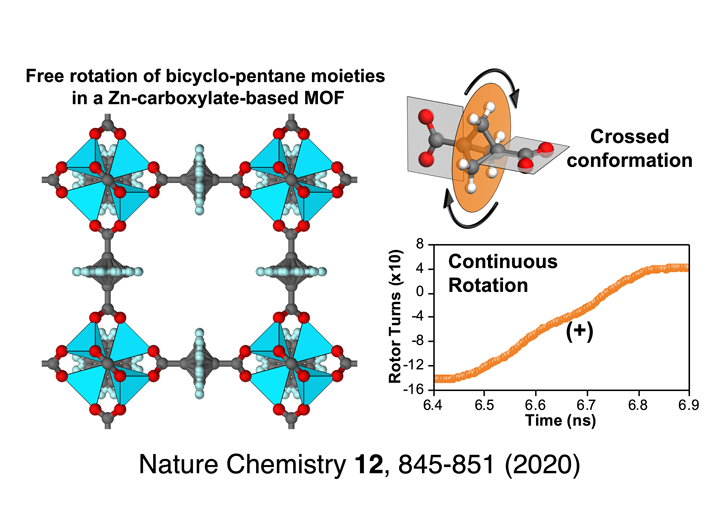J. Perego, S. Bracco, M. Negroni, C. Bezuidenhout, G. Prando, P. Carretta, A. Comotti, P. Sozzani
Nature Chemistry 12, 845-851 (2020)
Abstract
The solid state is typically not well suited to sustaining fast molecular motion, but in recent years a variety of molecular machines, switches and rotors have been successfully engineered within porous crystals and on surfaces. Here we show a fast-rotating molecular rotor within the bicyclopentane–dicarboxylate struts of a zinc-based metal–organic framework—the carboxylate groups anchored to the metal clusters act as an axle while the bicyclic unit is free to rotate. The three-fold bipyramidal symmetry of the rotator conflicts with the four-fold symmetry of the struts within the cubic crystal cell of the zinc metal–organic framework. This frustrates the formation of stable conformations, allowing for the continuous, unidirectional, hyperfast rotation of the bicyclic units with an energy barrier of 6.2 cal mol−1 and a high frequency persistent for several turns even at very low temperatures (1010 Hz below 2 K). Using zirconium instead of zinc led to a different metal cluster–carboxylate coordination arrangement in the resulting metal–organic framework, and much slower rotation of the bicyclic units.

